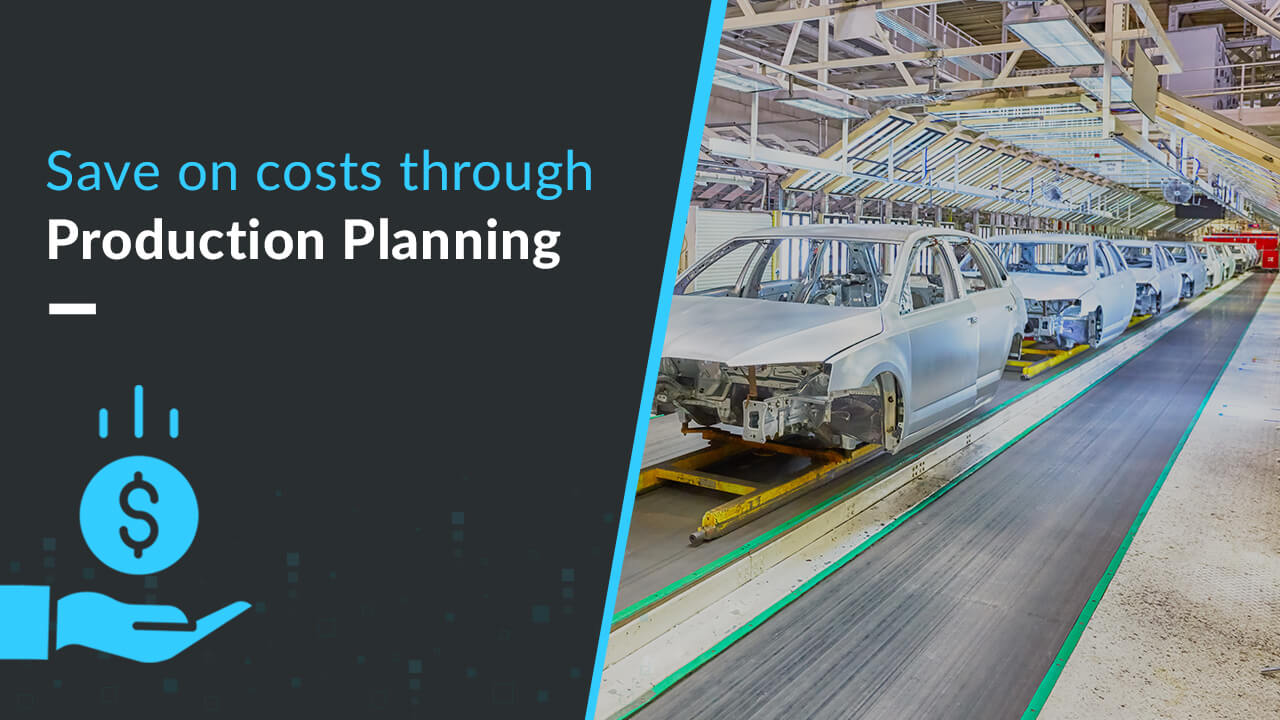The path to continuous improvement for the manufacturing industry today is fraught with challenges. As businesses grow and strive for a greater global presence, variabilities and supply chain complexities rise. The impact of this is often experienced in terms of burgeoning costs. Variable market demand leads to greater juggling of capacity and firefighting approaches to fulfil orders – increase in overtime leads to added costs; over-utilization of machinery and energy leads to greater downtime, and material deficiencies are managed with last-minutes supplier orders. All of these contribute to a high manufacturing cost overhead. Yet, efficiency is critical to the health of the business and order fulfilment is of utmost priority.

Striking a balance is, therefore, an imperative for manufacturing.
In recent decades, supply chain planners have seen enormous incentive in optimizing supply chain processes. And rightly so, since optimization across supply chain processes is estimated to reduce total supply chain costs by up to 25%. A sizeable portion of this opportunity lies in production planning optimization, which is estimated to drive a 5-18% increase in OEE (Overall equipment effectiveness). This implies that machine and capacity utilization through production planning can be upgraded to drive competitive advantage such that production has a lower footfall in terms of costs but exhibits high efficiency.
Unfortunately, most businesses today are not strategically positioned to harness the benefit of such optimization since production planning is still largely manual. Faced with the variabilities of the environment and to avoid time-consuming rescheduling and replanning scenarios, planning horizons are reduced, with the net result that production shifts are planned on a day-by-day basis. This not only captures a significant human potential towards a recurring and menial task but also limits the efficiency of production due to the human constraints of handling complexity and multi-dimensional datasets. Such inefficiencies have the potential to lead to high production costs.
Inefficiency Drivers
Production planning and control must orchestrate the complete series of processes from the procurement of raw materials to their conversion into finished products. This implies planning for the material, labour, and energy in the shop floor as well as ensuring the responsiveness to demand surges and fall, changes in materials availability, etc. A task of such nature is complicated for most traditional planning paradigms, especially when you consider high product variety, the requirement of planning at the level of each manufacturing plant and assembly line, uncertain demand, or supplier delivery limits.
Under such circumstances, it is obvious that inefficiencies will arise in traditional planning. Some of these inefficiencies contribute directly to manufacturing costs
- Inefficient utilization of assets. Inefficient utilization of assets can occur if the assets of production – machines, workforce, and energy – are underutilized or overutilized.
- Underutilization implies that a percentage of the production capacity is idle and, therefore, contributes to higher per-unit production costs.
- On the other hand, overutilization implies worker overtime and processes operating without maintenance, which can lead to low product quality, employee burnout, and equipment failure.
Both these scenarios contribute to the cost overhead.
- Inflexibilities of planning. The production environment of a business is often required to adjust to changing demand.
- Uncertainties of production can affect the production process such as delayed deliveries, machine breakdowns, absenteeism, or high scrap rates.
- Production capacity is largely dynamic, and any error in the determination of capacity is bound to make plans flawed
Production planning that is inflexible to such changes is ineffective, often requiring replanning and adjustments that can lead to higher waiting times and unused capacity. Further, errors of planning can go undetected long after the plan has been implemented and costs have piled up.
- Inability to incorporate the variables and constraints of the environment. The production environment of each manufacturing company is unique.
- There could be limitations of the physical infrastructure, such as the capacity of production and packaging differing across manufacturing plants and assembly lines or specific assembly lines manufacturing specific products only.
- Different criteria of manufacturing need to be incorporated. For automotive industries, for example, production planning must incorporate the requirements of CBU, CKD, or SKD manufacturing for different orders.
- Further, changes in the production environment, including product introduction or cancellation, new manufacturing plant or assembly line introduction, and changed packaging criteria may arise.
Most traditional planning paradigms are unable to optimally incorporate such variables and find the best solution within the constraints imposed by the environment. Consequently, production is liable to be flawed and daily firefighting becomes the norm.
The Solution for Optimized Production Planning
The burgeoning data storage and processing abilities of modern information technology software have made the optimization of supply chain processes not only an achievable task but also economically efficient and viable. One of the chief drivers of this change is smart technologies, primarily AI/ML and advanced analytics.
Today, with sophisticated AI/ML algorithms, production planning is automated and designed to deliver the targets of planning, including maximum order fulfilment or optimum cost reduction. Besides directly contributing to cost savings, certain additional cost opportunities are unlocked by such planning.
- Optimal Production Scheduling. Production planning is fast and flexible with smart technologies, besides being efficient and accurate. This implies that adjustments to production plans can be negotiated flexibly. Since the system can adequately address the variabilities of the production environment, production scheduling can be done for both the short term and long term.With such production scheduling,
- Maximum throughput of production is attained.
- All packaging, transportation, or capacity utilization criteria are met.
- Optimal capacity utilization is achieved.
- Time inefficiencies are removed.
- Production can be flexibly scaled to meet demand targets, without leading to overproduction or excessive inventory scenarios.
- Optimal use of workforce, materials, energy, and equipment is achieved.
- Optimal Productivity. Different human factors are implemented in the production planning process, including shift timings, number of working days, and shift efficiency. Besides these, machine downtime, productivity, maintenance time, etc. are also incorporated in the production planning and control.The full utilization of these factors ensures that
- Resources are never maxed out.
- Well-balanced and productive workflows are designed and machines and workforce operate optimally and at par with demand needs.
- Faster and automated planning ensures that human potential can be directed towards more value-added tasks such as problem-solving.
- Reduction of waste. As per research by the Lean Enterprise Research Centre (LERC), a staggering 60% of manufacturing activities are wasteful. Through optimal planning and scheduling, such waste is reduced including its manifestations such as over-production, waiting time, or skills. Reduced costs are often a by-product of waste reduction.
The Blend of Production Planning Optimization and Advanced Analytics
The vast volumes of production data generated each day in a manufacturing company can serve as a great opportunity to deploy advanced analytics. A blend of production planning optimization and advanced analytics can serve to harness great cost-saving potential in terms of detecting new cost reduction opportunities across the production process and the shop floor.
Besides direct cost savings benefits, advanced analytics allows
- Bottlenecks of performance such as inefficiencies of equipment or production lines to be detected.
- Real-time visibility of important metrics such as quality, equipment status, throughput, etc. to support quick decisioning and responsiveness.
- Alerts to be generated when metrics or parameters trend out of control.
Already digital transformation is permeating into each aspect of supply chain planning and management. Where the path to optimization was once an inflexible, error-prone, and menial task with a solution obtained with human decisioning, sophisticated planning paradigms today can deliver solutions through optimality and efficiency calculations from among multiple different possibilities.
An example in this regard is Verdis.
Verdis, an AI/ML-enabled platform is designed to override the complexities of the supply chain to drive optimized planning.
In the lens of production planning, Verdis PPC incorporates different dimensions of costs – manufacturing, packaging, and transportation, besides assimilating the complete set of the variables and constraints of the environment. So, the final production plan – the most optimal solution worked out for the given requirements and constraint variables, – can deliver upto 100% order fulfilment (depending on the feasibilities of the requirements) and maximum cost savings in manufacturing and freight.
With such a production planning process, there is not only an immense cost saving opportunity but also a chance to improve and upgrade manufacturing processes for greater efficiency.








